Normal Geometry Worksheets for Ages 4-7 - Page 3
63 filtered results
-
From - To


3D Shapes Quest Worksheet


In Front or Behind Worksheet
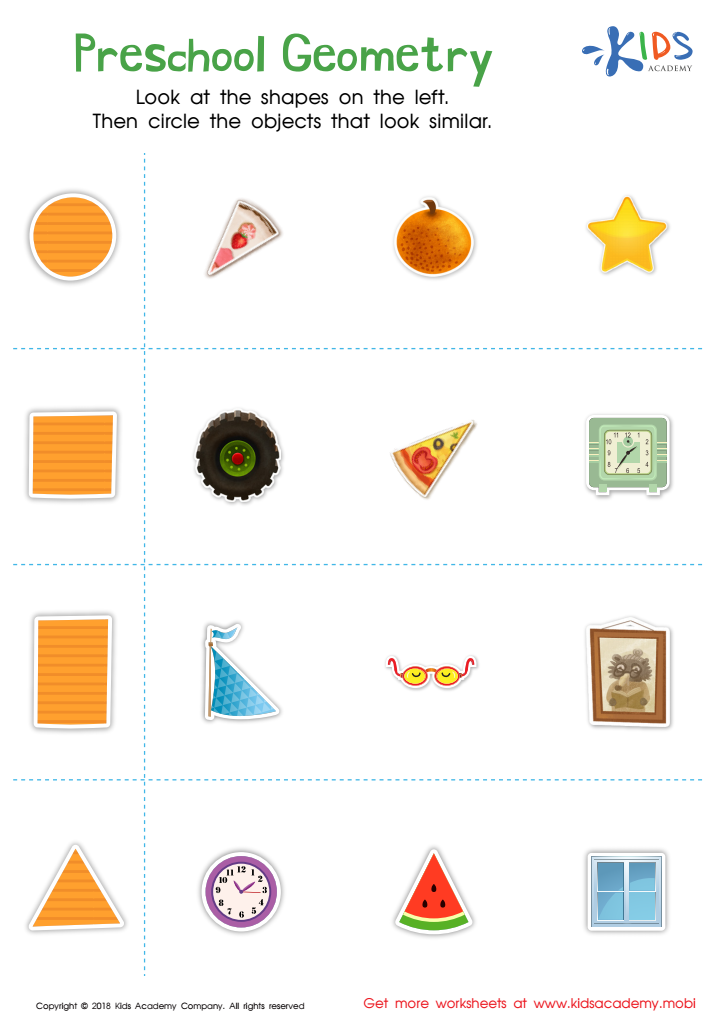

Preschool Geometry Worksheet
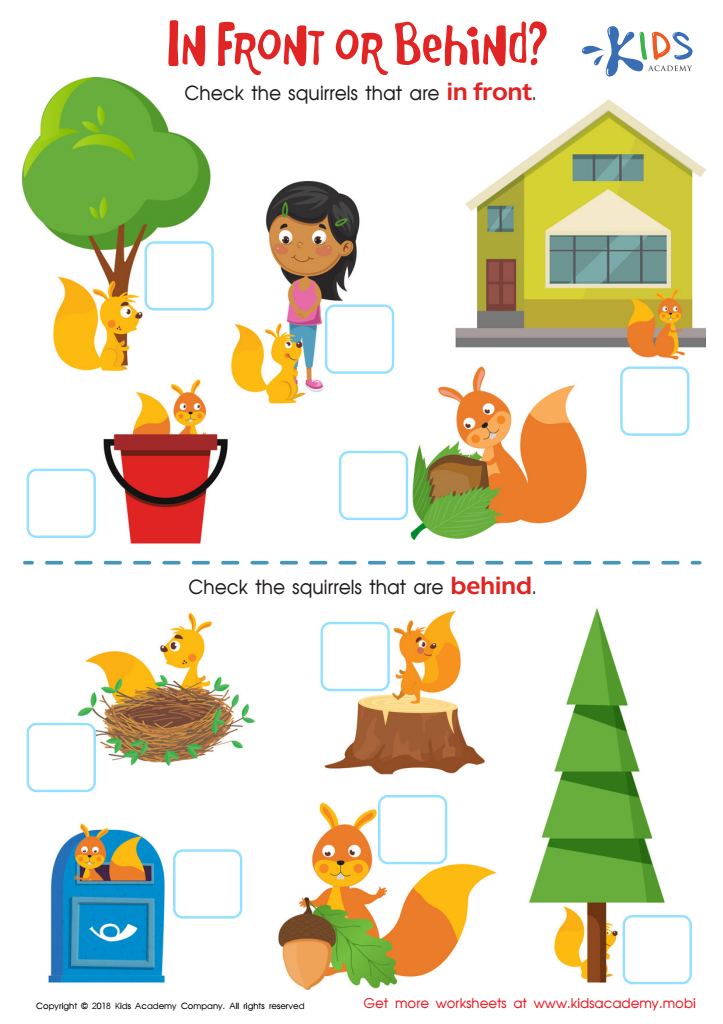

In Front or Behind: Part 2 Worksheet


Shapes in Real Life: Cone Worksheet


Using Squares to Make Rectangles Worksheet
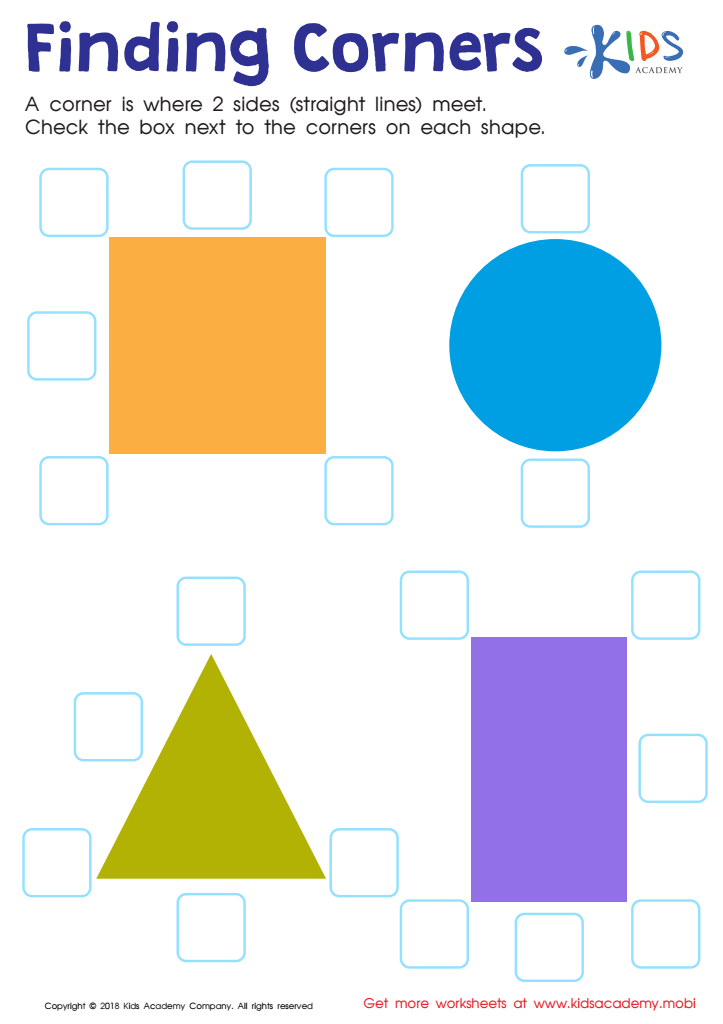

Finding Corners Worksheet
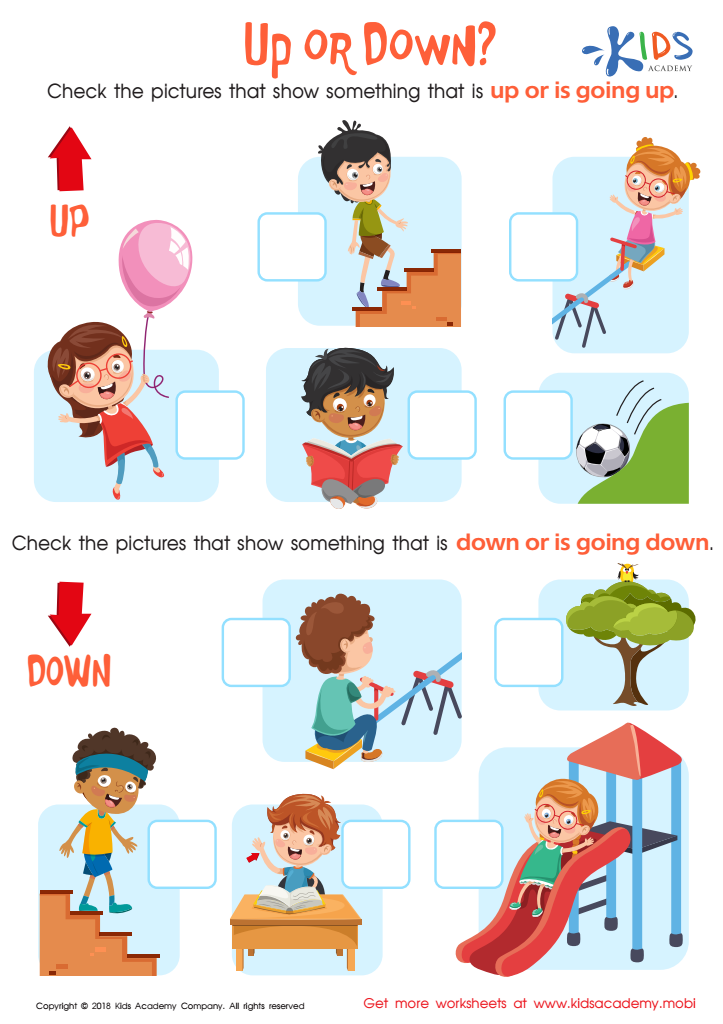

Up or Down Worksheet


3D Shapes Worksheet
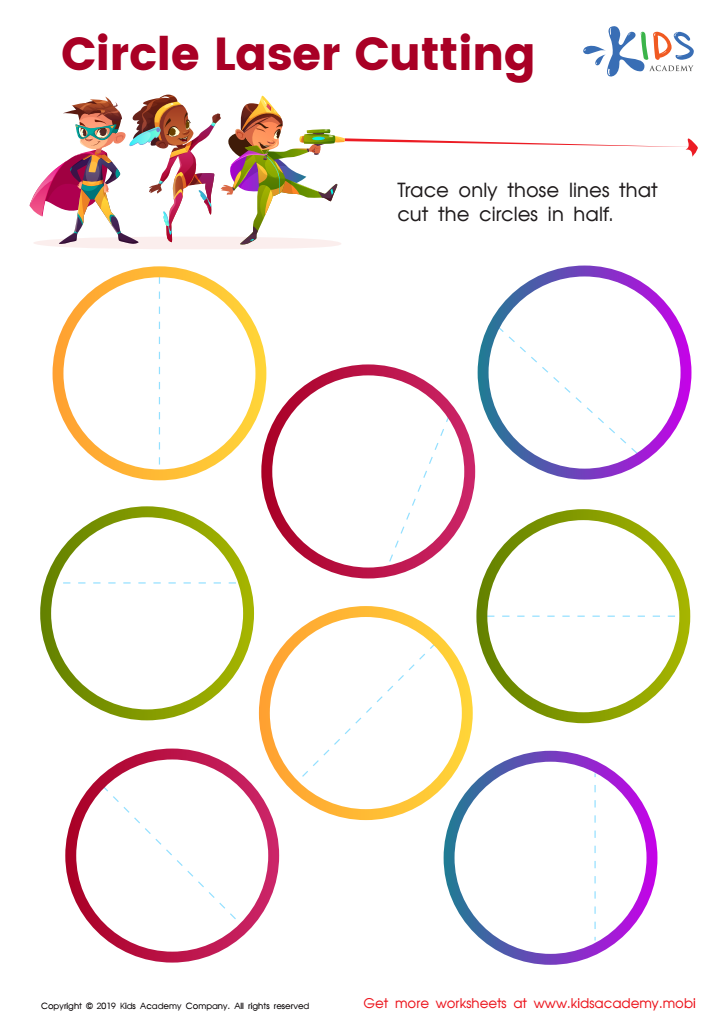

Circle Laser Cutting Worksheet
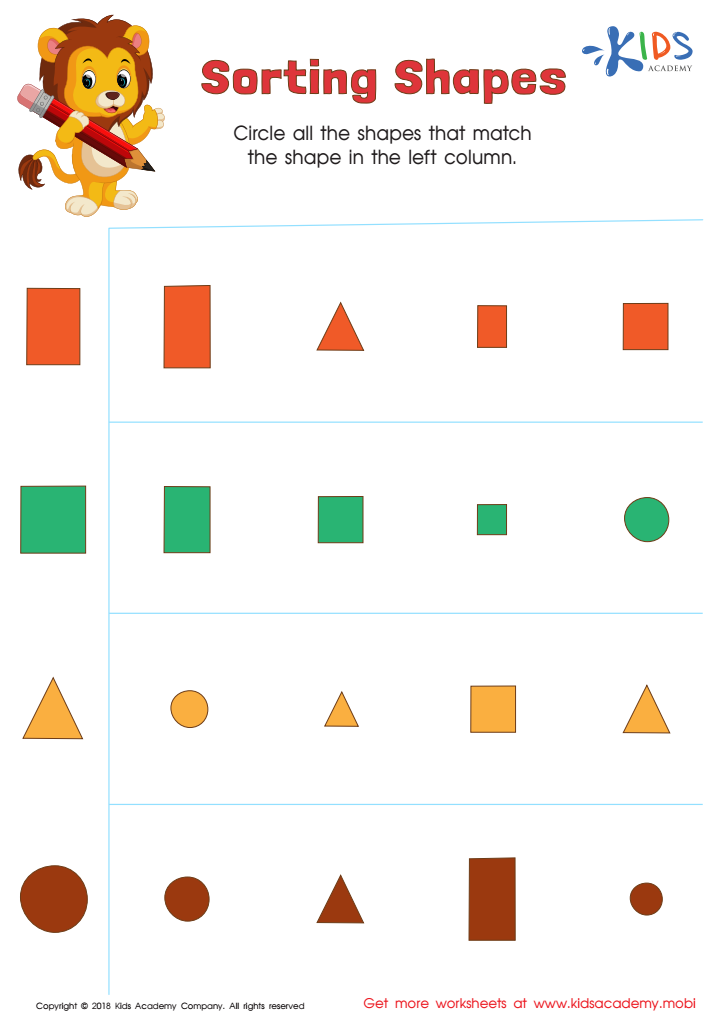

Sorting Shapes - Part 2 Worksheet


Data: Assessment 1 Worksheet


Gingerbread Man Geometry Maze Worksheet
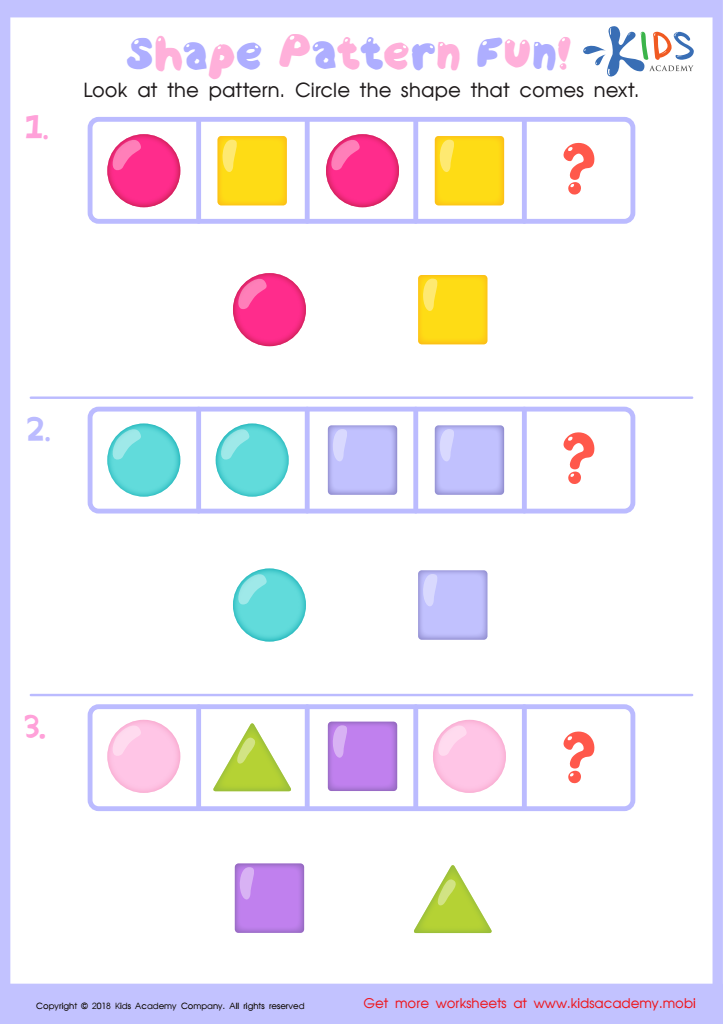

Shape Pattern Fun Worksheet
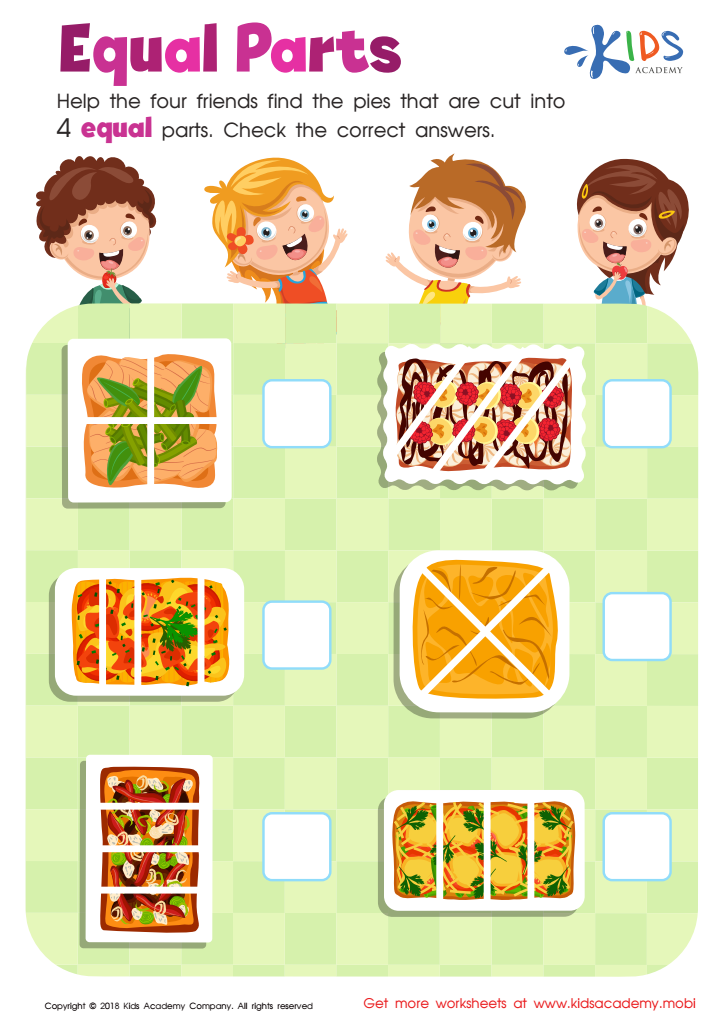

Equal Parts: Food Worksheet
Normal Geometry for ages 4-7 serves as a foundational element in childhood education, crucial for cognitive and spatial development. At this age, children are naturally curious and begin to explore shapes, sizes, and spatial relationships, setting the stage for critical thinking and problem-solving skills.
Teaching geometry early on helps foster a strong sense of spatial awareness, enhancing children’s ability to navigate their environments. It promotes mathematical language, enabling young learners to communicate their thoughts clearly. Intriguingly, this knowledge extends beyond mathematics; understanding geometry supports skills in various subjects, including art, science, and even physical education.
Moreover, engaging children with geometry through hands-on activities—like building with blocks or tracing shapes—enhances fine motor skills and encourages creativity. As students identify patterns, they develop logical reasoning abilities critical for academic success.
For parents and teachers, introducing geometric concepts promotes positive attitudes toward mathematics, alleviating the anxiety often associated with the subject in later years. Thus, caring about Normal Geometry is not just about teaching shapes but nurturing well-rounded, confident learners equipped with essential skills for lifelong learning.

 Assign to My Students
Assign to My Students
















